Producing a Cast: from Mold Creation to Patina

Making
a mold
The casting
process
Creating
the patina
Casting is the faithful recreation of a work of sculpture and is the result of a long, meticulous process that involves creating a mold and then using it to produce multiple reproductions.
Making a mold
Making a mold from a physical imprint

Silicone elastomer for the making of the Farnese Hercules mold
The artisans of the GrandPalaisRmn cast workshop produce molds from original artworks. In order to preserve them, a protective layer is first applied to the entire piece. The statue caster then uses a brush to apply two layers of liquid elastomer. This membrane is made up to around one centimeter thick, depending on the volume being molded. The advantage of this material is that it is elastic, precise and easy to unmold.
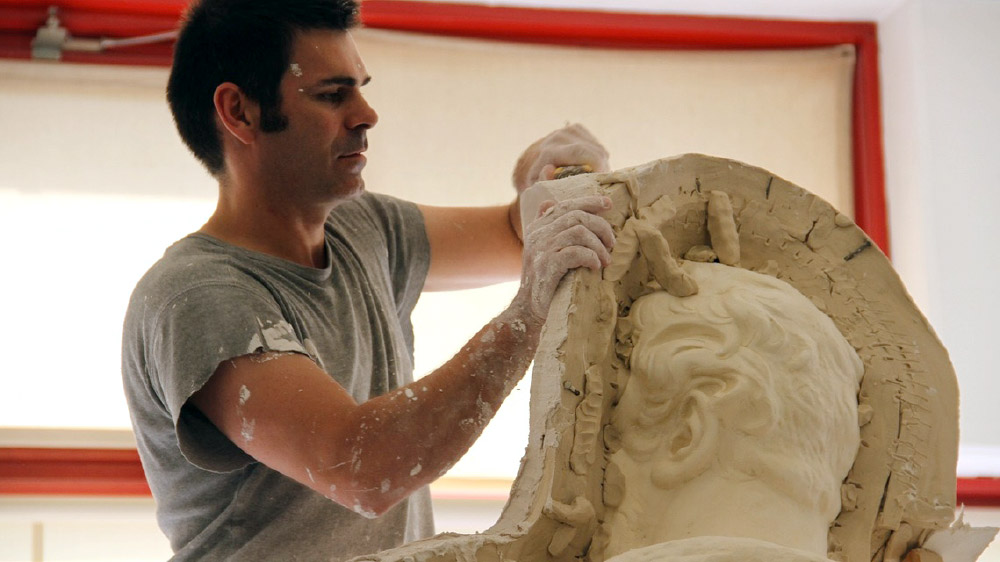
Creating the mold
Once the object is covered in its silicone membrane, all the layers of plaster coating are produced for the different parts of the mold. These hold the silicone in place when the piece is unmolded. A wooden frame supports the coating and helps with unmolding and the handling of the mold. Once the mold is finished, the artwork is unmolded. This is the most difficult step, as any mistake when handling can potentially damage the original.
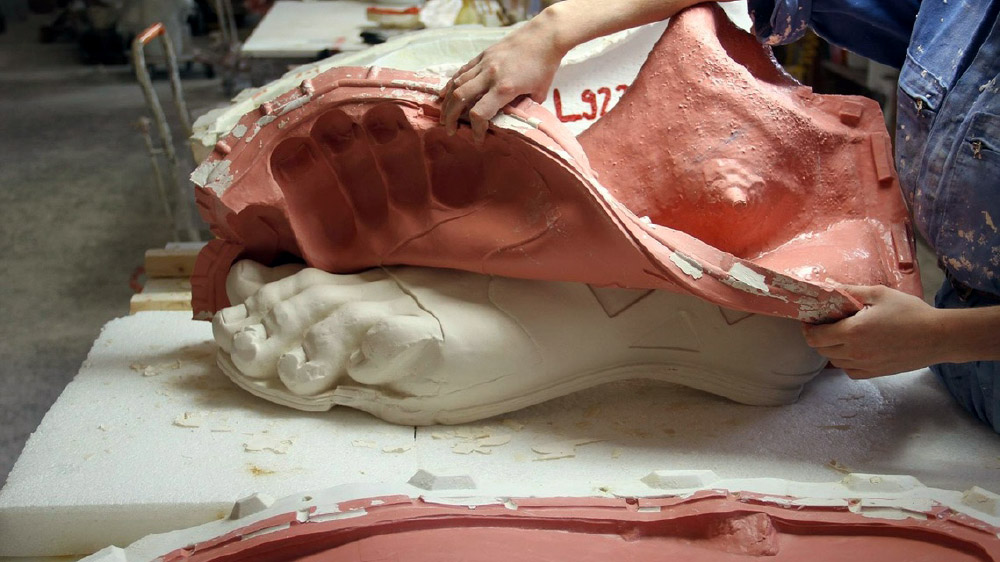
Unmolding
Making a mold from a 3D imprint
The cast workshop also puts its digital technology to use when producing 3D imprints, which have the dual advantage of avoiding direct contact with the artwork, and offering the possibility of making enlargements and reductions. As the definition of the surface offers less precision than silicone elastomer (a difference of 5 microns for a physical imprint versus 200 microns with the use of 3D), digital technology is used only when the original artwork is fragile, or if a change in format of the reproduction is sought.
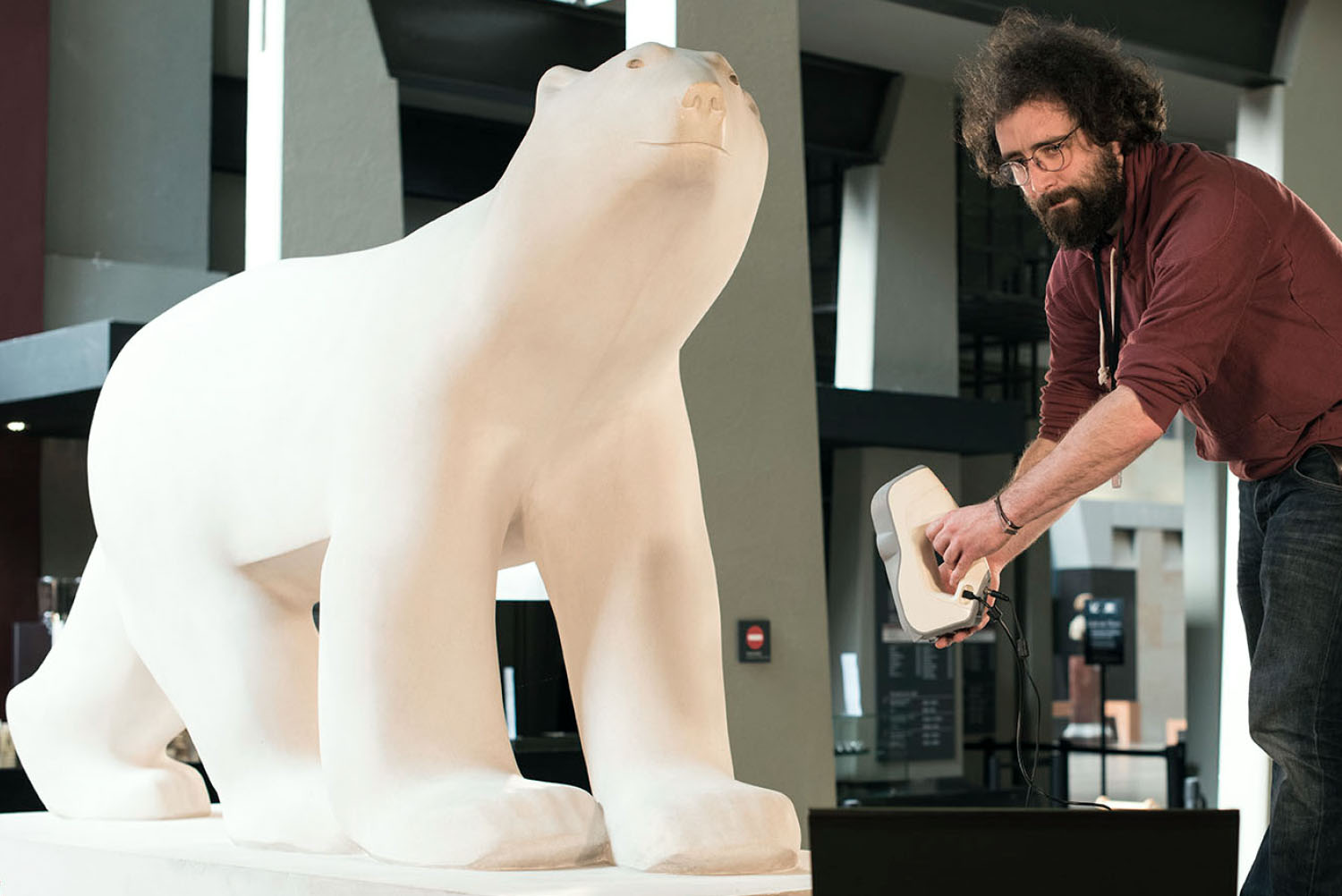
Processing the digital imprint of Pompon’s Bear
The casting process
The GrandPalaisRmn cast workshop has some 6,000 molds used for casting in plaster, resin, terracotta and bronze. Slush casting is the most frequently used technique. Plaster is applied to the mold in thin layers, the first using just plaster, the second reinforced with oakum. A wooden or metal frame is produced to support and strengthen large pieces.
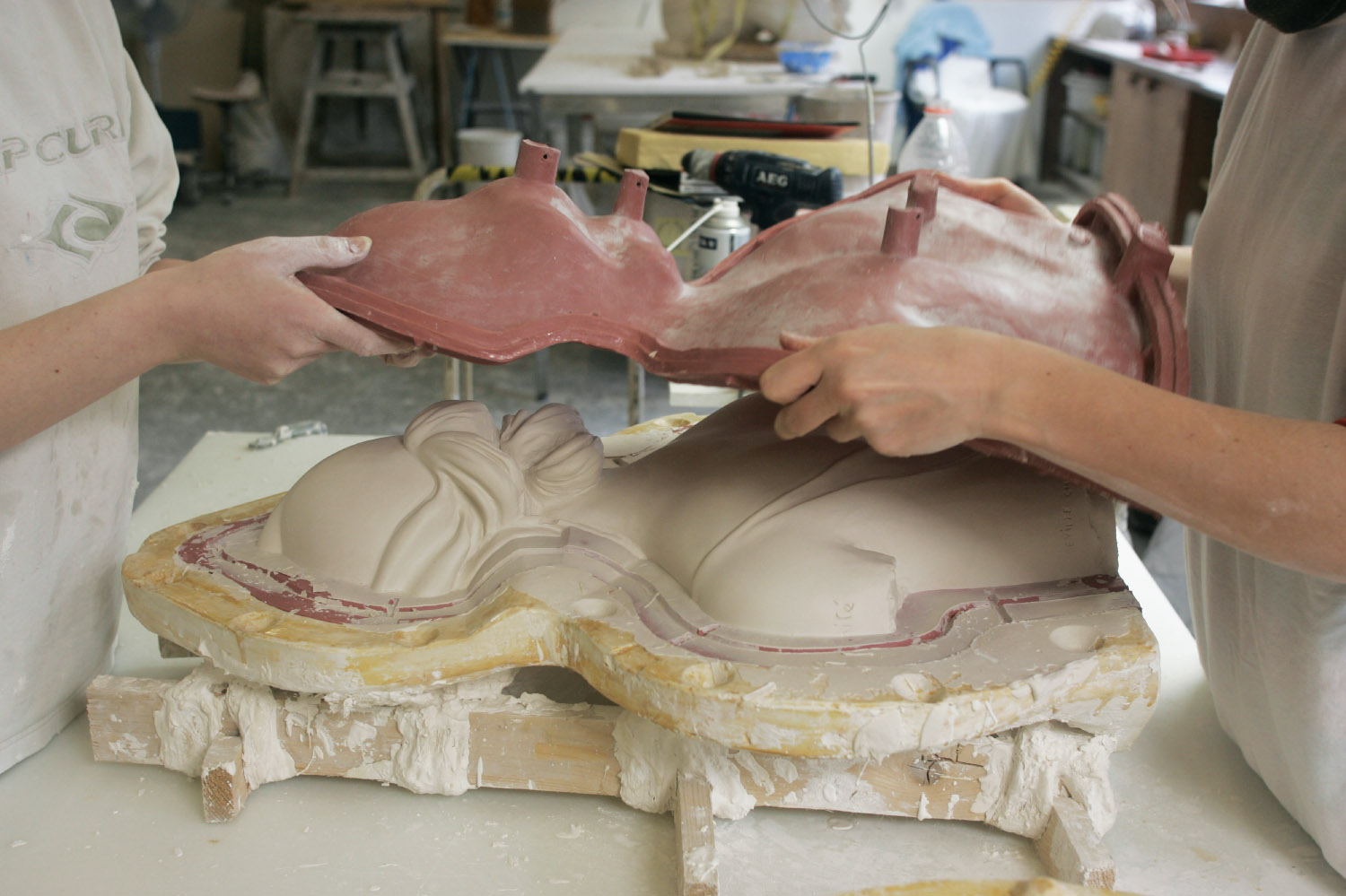
Unmolding
When the plaster has set, the cast is removed from the mold. The piece has various “seams” from where the different parts of the mold have been joined together. These are trimmed and then made uniform with the rest of the model to ensure that no traces of the production process are visible.
The patina
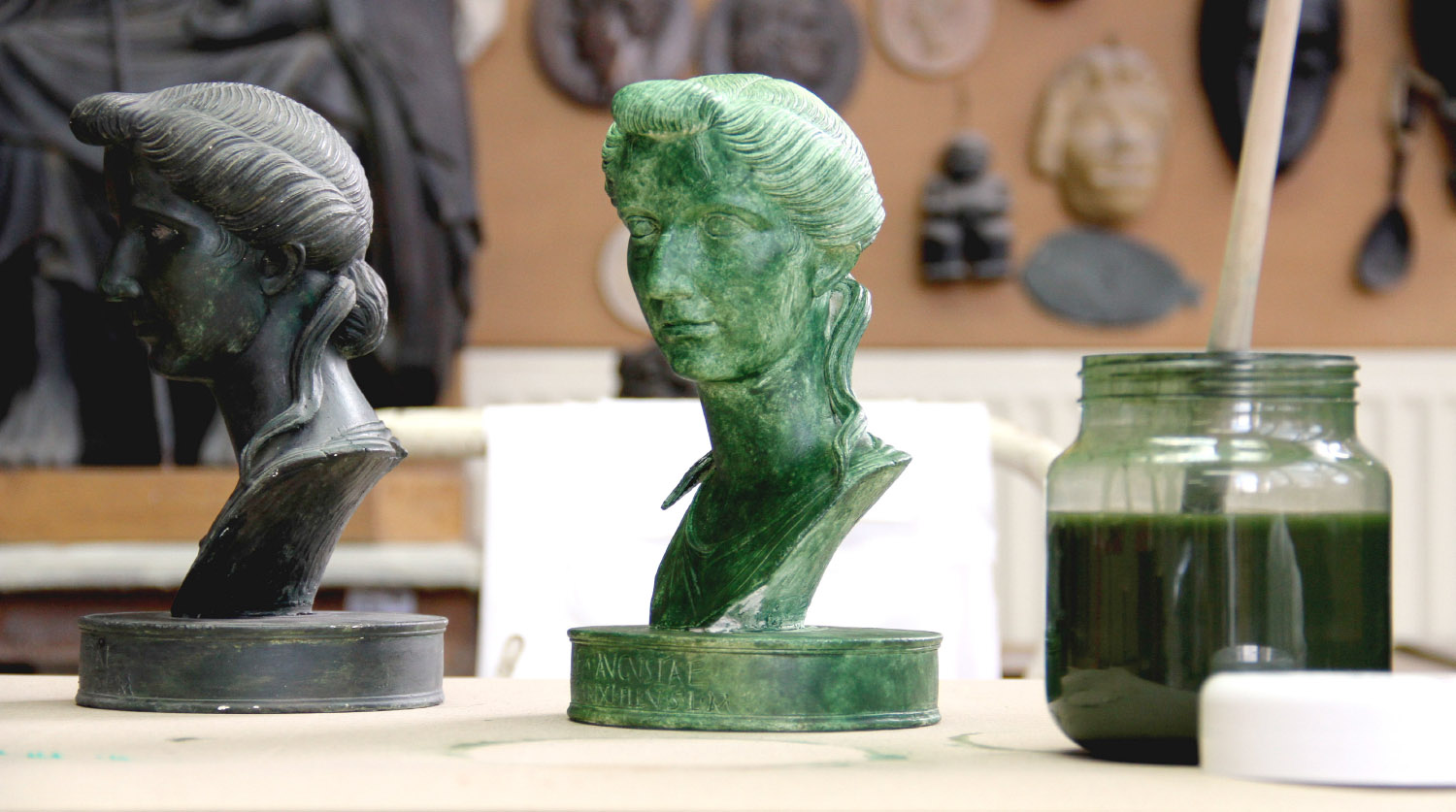
Bronze-effect patina
The final step in producing a cast involves applying a patina to the raw material to create a surface effect that is as close as possible to the original, giving it the appearance of marble, terracotta, bronze, etc., as well as reproducing an effect of the passing of time.
The GrandPalaisRmn cast workshop employs a team of expert patinors. Creating a patina always involves a close inspection of the original to ensure that the result is as accurate as possible. The patinors work with museum curators to verify the model.
The GrandPalaisRmn cast workshop employs a team of expert patinors. Creating a patina always involves a close inspection of the original to ensure that the result is as accurate as possible. The patinors work with museum curators to verify the model.

Marble-effect patina
Read a complete article on our work published in the Revue des Patrimoines.